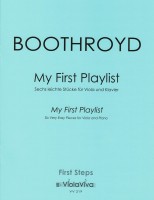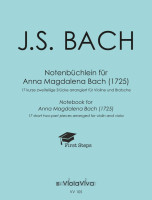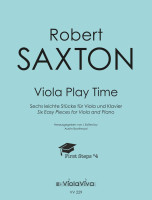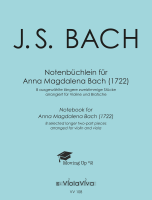
Thinking of Writing Your Own Cadenza?
Anabel Avendaño - A cadenza is deeply rooted in the improvisatory spirit that has always been part of music-making. It offers a perfect opportunity to play freely, display the performer’s artistry, and heighten the momentum of a piece.
The term cadenza comes from the Latin clausula (“conclusion”), itself derived from cadere (“to fall”). In some languages, cadenza refers to harmonic progressions, while in others it specifically denotes an ornamental solo passage.
| Concept | English | German | Spanish | Italian | French |
| Solo passage | Cadenza | (Solo) Kadenz | Cadencia solista / Cadenza | Cadenza | Cadenza / Cadence solo |
|
Harmonic
closure
|
Cadence | Kadenz | Cadencia | Cadenza | Cadence |
Historical Context
In earlier centuries, cadenzas were often improvised rather than written out. During the Baroque and early Classical periods, singers and instrumentalists were expected to embellish melodies spontaneously, showcasing their technical skill and imagination. Cadenzas became a way to give freedom to the interpreters without compromising the whole work with too specific demands.
Some composers, such as Claudio Monteverdi, even provided both unornamented and ornamented versions of their works to demonstrate how embellishment could be approached. (Example: Monteverdi’s “L’Orfeo,” Act III, p.56 — Recording)
By the Classical period, the cadenza became an essential element of the concerto. When the fermata appeared before the final cadence, it was an open invitation for the soloist to improvise.
However, during the Romantic era, written cadenzas became more common. Composers such as Beethoven, Brahms, and Liszt began writing out their own, reflecting a broader cultural shift away from improvisation toward a focus on precise interpretation.
Why Did Improvisation Decline?
From the late 18th century onward, several factors reshaped Western classical music:
- Changing patronage systems: As court patronage declined and public concerts became more common, musicians relied less on improvisatory creativity and more on reproducible compositions.
- Rise of the conservatory system: Institutions such as the Paris Conservatoire (founded in 1795) emphasized written notation and standardized performance practices, ensuring that music could be faithfully transmitted even to students with limited music background.
- Composer authority: The growing idea of the composer as the ultimate creative voice reduced the performer’s freedom to alter or improvise.
Together, these trends led to an increasing emphasis on interpretation rather than creation in performance.
Writing Your Own Cadenza Today
Composing your own cadenza is not only a creative challenge but also a way to deepen your understanding of the piece and connect more personally with it.
Here are some guidelines to help you get started:
1. Harmonic Context
The cadenza typically begins after the second inversion of the tonic (I⁶⁴), while theorchestra holds the dominant (V).
A common cadential formula is:
I⁶ – ii⁶ – I⁶⁴ – V⁷ – I
2. Thematic Material
Draw your motifs from themes in the exposition. Maintain rhythmic coherence withthe movement, even while exploring contrasts and surprises.
3. Modulation and Harmony
Stay close to the main key and its relatives; excessive modulation can weaken the sense of unity.
4. Virtuosity
Use scales, arpeggios, and wide leaps to create excitement and momentum.
5. Experiment and Refine
Improvise several versions, record yourself, and then notate the best ideas. Over time,you’ll shape a cadenza that feels both spontaneous and coherent.
Creating your own cadenza restores a vital element of musical creativity that was central to performance for centuries. It’s a rewarding way to rediscover the balance between freedom and structure between composer and performer.
I am myself in the process of creating my own Cadenza for Stamitz viola Concerto, feel free to share and discuss your process through instagram music4viola DM’s!!
References:
Viola Newsletter |
 Do you don't want to miss any news regarding viola anymore? Our monthly viola news letter will keep you informed.
Do you don't want to miss any news regarding viola anymore? Our monthly viola news letter will keep you informed.
» Subscribe to our viola letter for free
|
|
 Visit us on Instagram and don't forget to join our music community and share your thoughts about the composer or any other viola-related ideas!
Visit us on Instagram and don't forget to join our music community and share your thoughts about the composer or any other viola-related ideas!
» Music4Viola on Instagram
|
|
 Visit and like us on Facebook. The news articles are also posted.
Visit and like us on Facebook. The news articles are also posted.
» Music4Viola on Facebook
First StepsEducational Catalogue for the Viola |




Moving UpEducational Catalogue for the Viola |
MasteryEducational Catalogue for the Viola |







